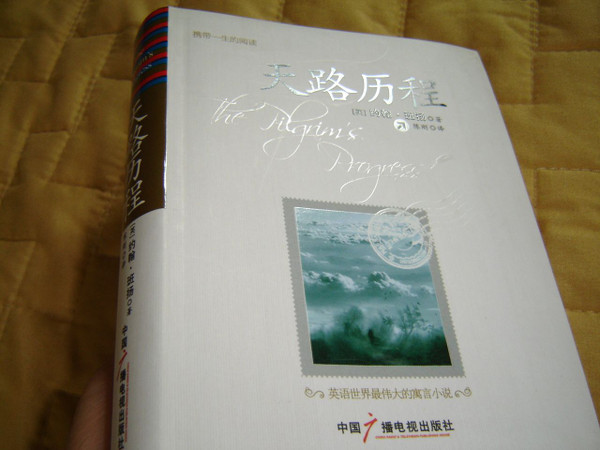Description
The Pilgrim's Progress in Chinese Language - Luxury Edition
Overview / 概述
"The Pilgrim's Progress from This World, to That Which Is to Come" is a classic Christian allegory written by John Bunyan in 1678. This luxury edition, translated into Chinese, offers readers a profound exploration of faith and the Christian journey. It is regarded as one of the most significant works of religious literature and has been translated into over 200 languages.
《天路历程》是约翰·班扬于1678年创作的经典基督教寓言。这本豪华版中文翻译本为读者提供了对信仰和基督徒旅程的深刻探索。它被认为是宗教文学中最重要的作品之一,已被翻译成超过200种语言。
Product Features / 产品特点
- Format: Hardcover / 格式:精装
- Length: 280 pages / 页数:280页
- Publisher: China / 出版社:中国
- Language: Chinese / 语言:中文
- ISBN: 978-7535432599 / ISBN:978-7535432599
- Product Dimensions: 21.6 x 15 x 2 cm / 商品尺寸:21.6 x 15 x 2 cm
- Product Weight: 440 g / 商品重量:440克
Key Insights / 重要见解
- Bunyan began writing this allegory while imprisoned for his religious beliefs, reflecting the struggles and triumphs of the Christian faith.
- 班扬在因宗教信仰被监禁期间开始创作这部寓言,反映了基督教信仰的斗争与胜利。
- The narrative follows the protagonist, Christian, on his journey to the Celestial City, encountering various characters and challenges along the way.
- 故事讲述了主角基督徒在前往天国之路上的旅程,途中遇到各种角色和挑战。
- This edition is not only a literary treasure but also a spiritual guide, making it an essential read for anyone interested in Christian literature.
- 这本书不仅是文学珍品,也是精神指南,对于任何对基督教文学感兴趣的人来说,都是必读之作。
Characters / 角色
- Christian (基督徒): The protagonist who embarks on a journey to the Celestial City.
- Evangelist (福音传道者): The guide who directs Christian on his path.
- Obstinate (顽固者): A character representing stubbornness and resistance to faith.
- Pliable (易变者): A companion who struggles with commitment.
- Help (帮助者): A figure who aids Christian in times of need.
Publishers / 出版信息
Published by China, 2010. / 出版社:中国,2010年。
We value your feedback! Share your experience with this product to help others make informed decisions. Your review is important to us!
我们重视您的反馈!分享您对本产品的体验,以帮助他人做出明智的决定。您的评价对我们很重要!
Hashtags
#PilgrimsProgress #JohnBunyan #ChineseEdition #LuxuryEdition #ChristianLiterature #天路历程 #约翰班扬 #基督教文学


















